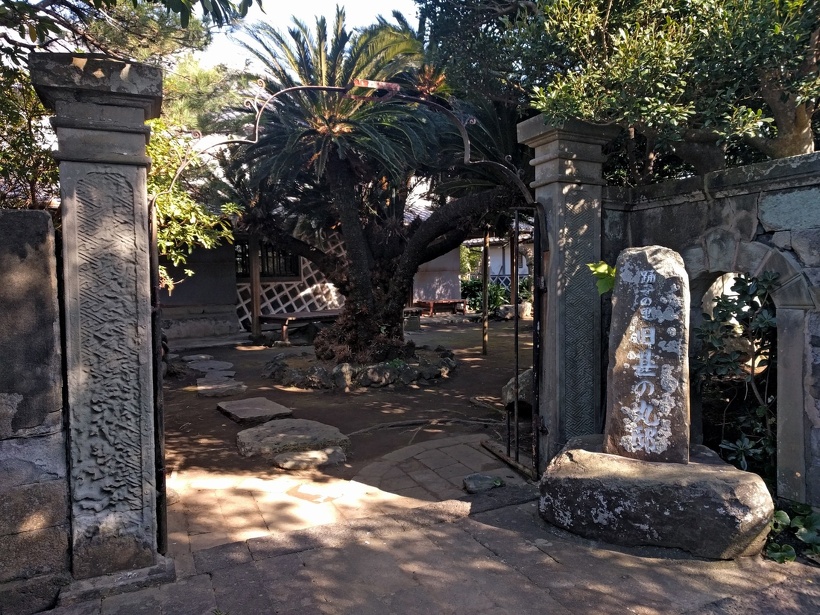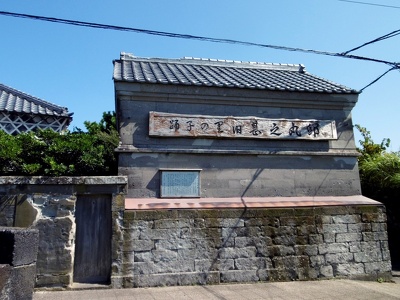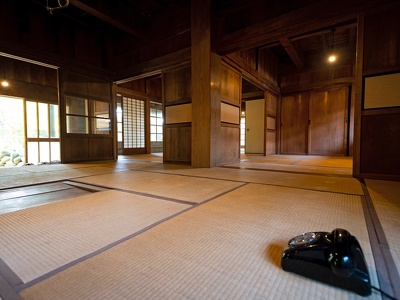Former Jinnomaru Residence
| Area | Habuminato |
|---|

In front of the house, surrounded by a wall of Oya stone, is the two-story stone residence of the former JinnoMaru, with sea-squirt walls. It was built in the Meiji era (1868-1912), and the use of Oya stone and sea squirt walls, as well as the use of famous wood for beams, floor pillars, corridors, shelves, etc., show the opulent lifestyle of the people. The use of sea squirt walls and Oya stone was heavily influenced by Shimoda in Izu.
There is much to see here, such as the beams in the ship's bottom ceiling, the large central pillar, the tiles in the entrance and bathrooms, the ceramic toilets, the dry landscape garden, and the plaster decoration. The second floor, which was used to raise silkworms and produce cocoons, is built differently from the second floor of ordinary houses. In the center of the earthen floor are the remains of a vise used to squeeze camellia oil. It has been buried, but it is clear that there was a part where the oil was stored. Inside the house, there is a stone warehouse built in the Bunkyu period. It is said to have housed valuable items such as family heirlooms.


